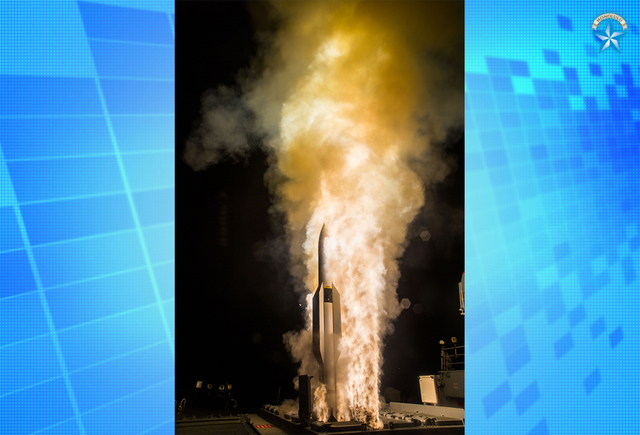Navy conducts missile tests off Hawaii

COURTESY MISSILE DEFENSE AGENCY
The Missile Defense Agency and sailors aboard the Pearl Harbor destroyer USS John Paul Jones successfully fired a salvo of two SM-6 Dual I missiles against a complex medium-range ballistic missile target.
The Missile Defense Agency and Navy continued testing the versatility of the SM-6 missile with a salvo of two missiles fired at a ballistic missile target in the “terminal” or final phase of flight early this morning off Hawaii.
The Pearl Harbor destroyer USS John Paul Jones fired the defensive missiles after a target missile was launched from the Pacific Missile Range Facility on Kauai just after midnight.
The target missile represented a medium-range ballistic missile — something the U.S. military is increasingly concerned about.
The SM-6 Dual 1 missiles fired by the John Paul Jones can be used for either increasingly sophisticated and lethal cruise missiles that come in low and ballistic missiles in the terminal phase of their arc.
The Aegis sea-based missile defense element utilizes Aegis cruisers and destroyers to defend against short- to medium-range ballistic missiles in the midcourse of flight as well as in the terminal phase, which is short and begins once the missile reenters the atmosphere, MDA said.
MDA said today’s salvo firing “met the test’s primary objective” — without an apparent warhead explosion.
Don't miss out on what's happening!
Stay in touch with breaking news, as it happens, conveniently in your email inbox. It's FREE!
“This test demonstrates the capabilities MDA and the Navy are delivering to our fleet commanders,” MDA Director Vice Adm. Jim Syring said in a release.
The SM-6 missile uses an explosive warhead to defeat ballistic missile threats, which differs from the often-employed SM-3 that uses more costly non-explosive “hit-to-kill” technology, MDA and missile maker Raytheon said.
The SM-6 Dual 1 missile is “considered a triple threat, providing anti-air warfare, sea-based terminal ballistic missile defense and anti-surface warfare,” acording to Raytheon.
The U.S. Navy fired an SM-6 Dual 1 missile in July 2015 for the first time, intercepting and destroying a short-range ballistic missile target at sea in its final seconds of flight, Raytheon said.
2 responses to “Navy conducts missile tests off Hawaii”
Leave a Reply
You must be logged in to post a comment.





Why don’t they just wait until New Year’s Eve and conduct their missile tests with everybody else??
It is nice to know that the US Navy is working on making this technology reliable, given we are more likely a target of North Korea than the US mainland (based on range and accuracy limitations) and the Navy can base those assets forward here to protect us. I don’t believe the US land based ABMs (in Alaska and California) are reliable enough by history to provide us sufficient protection without the double layer of security provided by the US Navy’s Aegis system. The only current advantage of the interceptors on land is that they conceptially have more capability to hit long-range ICBMs (which can travel at higher speeds, may be more likely to have maneuverable warheads, and could have more decoys).